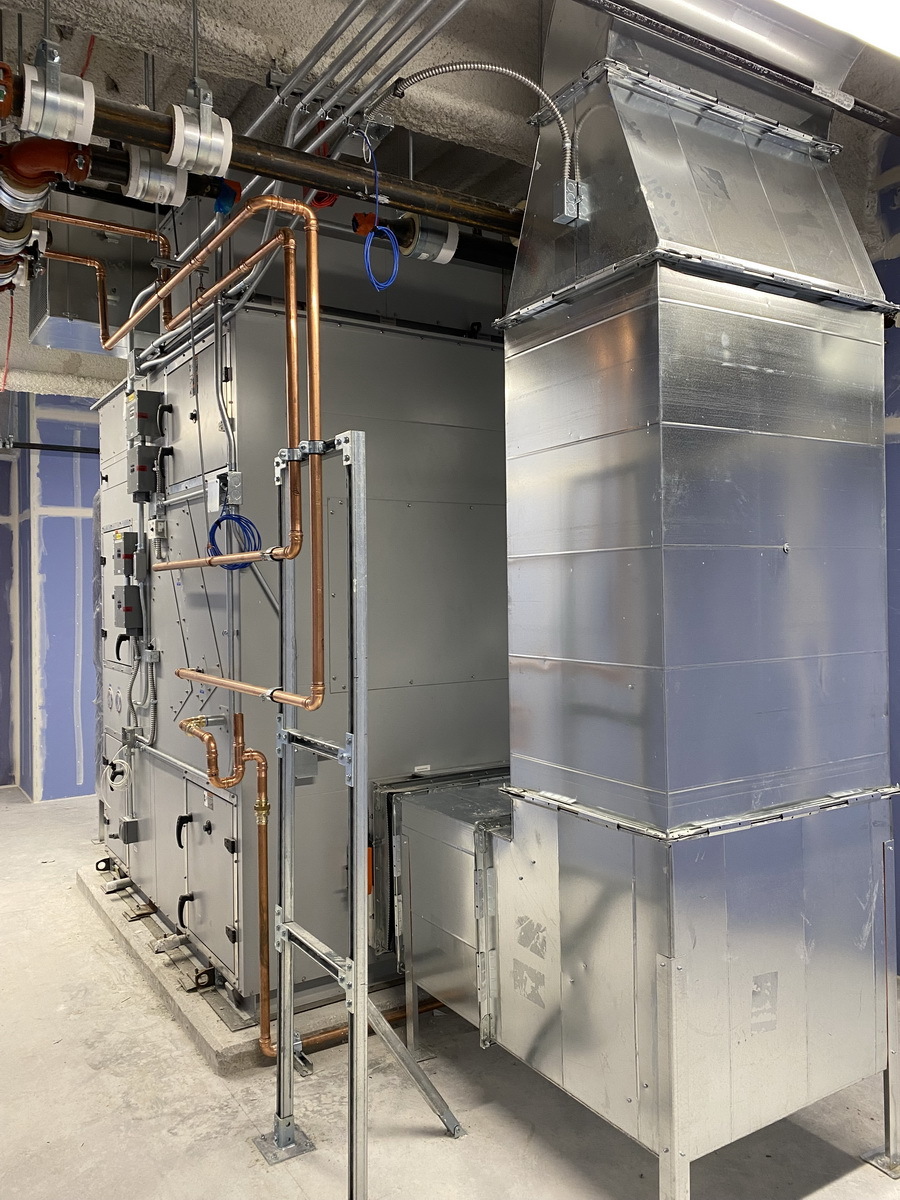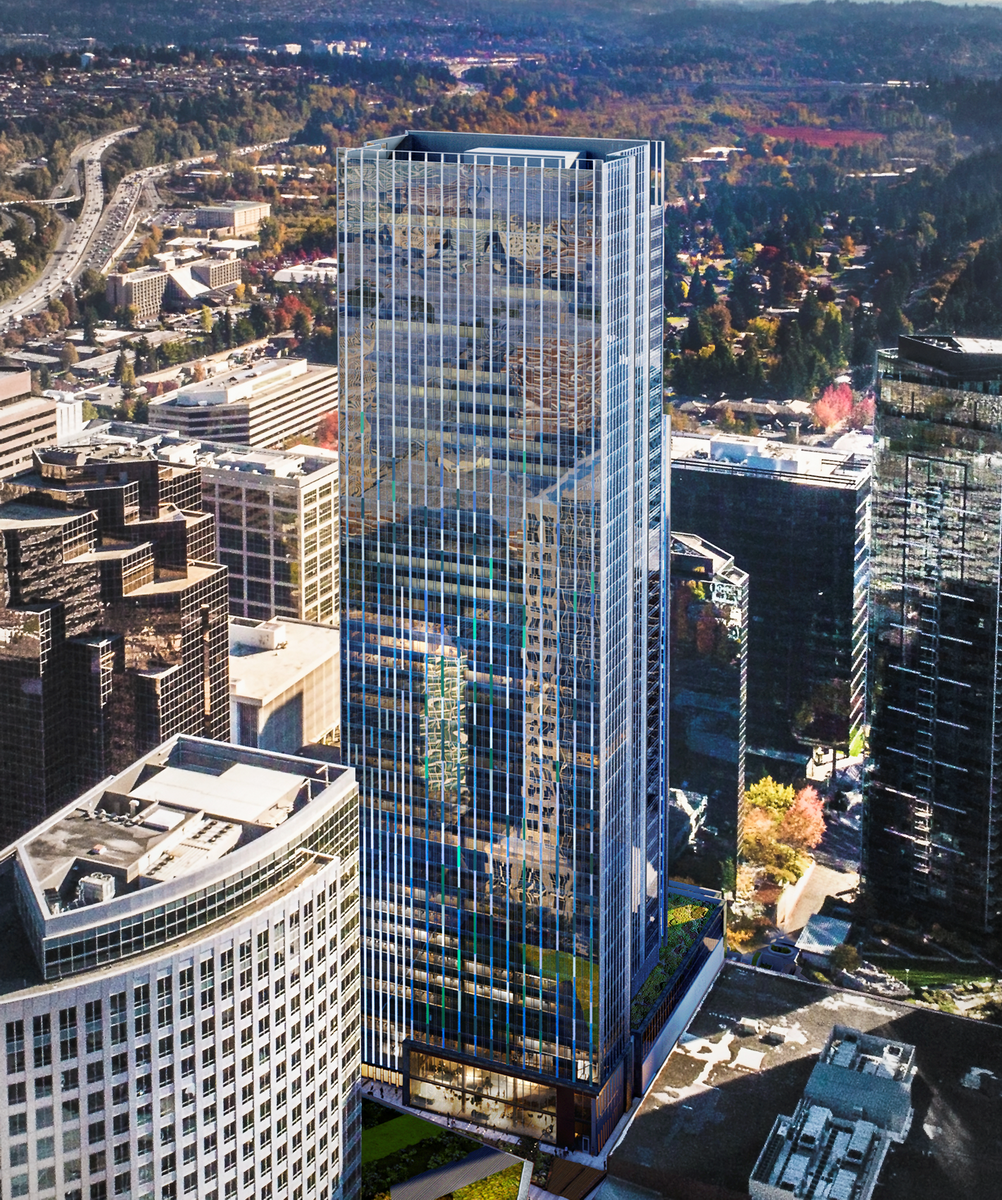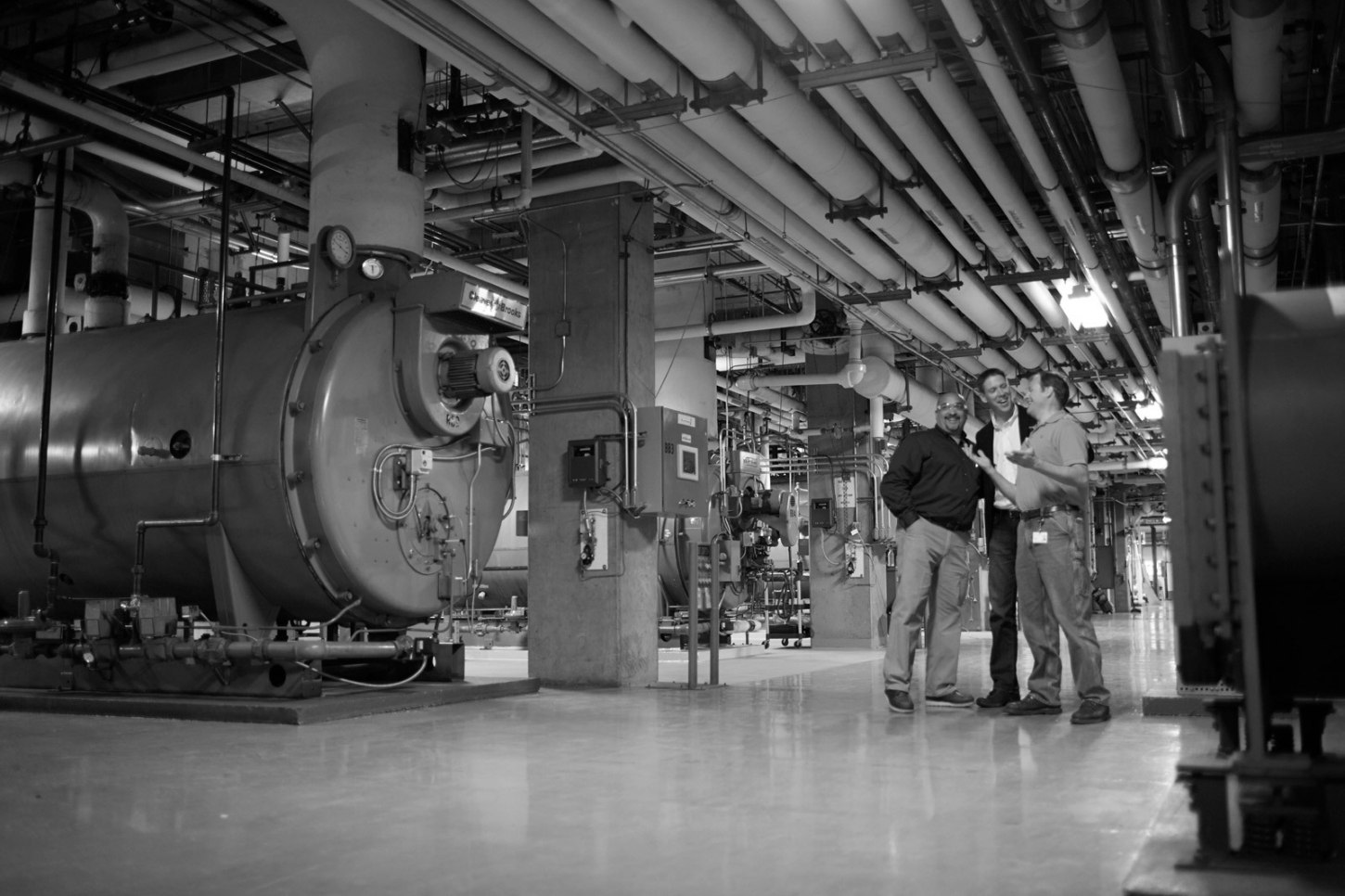Originally featured in SMACNA News Jan/Feb 2022 issue. Click here to see the article.
Elevating Comfort Through Code Expertise
C403.3.5 Dedicated outdoor air systems (DOAS). For buildings [with certain occupancy classifications], outdoor air shall be provided to each occupied space by a dedicated outdoor air system (DOAS) which delivers 100 percent outdoor air without requiring operation of the heating and cooling system fans for ventilation air delivery.

In some states, this new energy code requirement would create an uproar among HVAC contractors, but not in the state of Washington. Washington is known to have some of the most progressive energy efficiency building codes in the country. So, when the final version of the 2018 energy code included a requirement for DOAS, SMACNA firms like Mukilteo, Washington-based UMC were prepared.
“As a design-build contractor with in-house engineering capabilities, UMC is actively involved in helping shape the direction of energy codes in our area,” said Peter Boileau, UMC project executive/senior project manager. “Knowledge of not only what current energy code requirements are, but where future code requirements are going, is critical to advising our customers on the right HVAC system selections for their projects.”
Energy code expertise has been important to UMC’s work on a new 42-story building at 555 108th Street, NE, Bellevue, Washington — a suburban city seeing dramatic growth. When complete in 2023, the 600-foot office tower will be the tallest building by 150 feet in this high-tech city. Designed for occupancy by a single high-tech company, the building will be LEED certified and will also feature tailored systems designed to allow employees to do their best work in comfortable environments. DOAS systems will enable building users to experience the fresh, natural breeze of outside air.
“Our Bellevue office tower project was especially interesting in that the building qualified for the earlier 2015 energy code that did not require DOAS,” Boileau said. “With our help the developer decided to build a code-forward building incorporating DOAS as they believed it would attract long-term ‘green’ tenants, and they were right.”

According to Boileau, one DOAS unit will be installed on each floor of the Bellevue tower. A DOAS system typically provides a ventilation supply air fan and an exhaust/relief air fan, with a heat exchanger between the two airstreams to temper outside air to a neutral temperature of around 70 degrees F. The units on the 555 108th Street project are sized to provide minimum code required ventilation per floor occupant, plus 30% extra capacity to provide increased outside air ‘flushing’ if needed. The installed DOAS units supply outside air for ventilation, exhaust for the building restrooms and relief air to maintain building pressurization requirements. The energy recovery heat exchanger pre-heats outside air in the winter and pre-cools it in the summer, which means no new energy is required to handle ventilation loads in
the building, a significant reduction in energy use. DOAS units can be incorporated into smoke control/life safety systems if appropriate for life safety code compliance on high-rise buildings. They can also be used to offset high-rise “stack effect” in tall buildings located in cold climate regions, a strategy that was used in the 555 108th Street project.
The 555 108th Street development consists of a 5-story underground parking garage, a 42-story tower, and a retail/restaurant pavilion sharing a common outdoor plaza space. The mechanical system includes a 2,000-ton central plant which provides cooling to a distributed fan coil system. Perimeter heat is provided by electric resistance coils, with no heating required for interior spaces which is typical of buildings of this type constructed in Western Washington.

“Using DOAS on your building decouples the ventilation system from the thermal comfort system which maintains indoor temperatures,” Boileau explained. “DOAS systems can, however, assist certain thermal comfort systems depending on the system selected. An example of this is the use of chilled beams or sensible-cooling only VAV systems. Since these systems cannot remove latent heat from the spaces they serve, the DOAS unit can be used to do this utilizing heat recovery and in some cases with additional pre-cooling coils to absorb latent heat and humidity as needed.
Boileau said Washington’s target is to reduce energy consumption on new residential and commercial buildings from 2006 code levels by 70% by 2031. This ambitious goal means an average of a 14% reduction for each code update compared to the previous code’s requirements to meet the 70% energy reduction target.
“In our state, we have optimized envelope, lighting systems and equipment efficiencies to reduce energy,” he continued. “A current focus is to limit the use of large, central fan systems to reduce overall fan motor energy use. This lines up with the increased use of DOAS and small/distributed thermal comfort systems we are currently seeing in our market.”
“Where states do not subscribe to progressive energy codes, contractors are probably not installing DOAS because first costs are typically higher than traditional systems,” said Boileau.
UMC President Steve Brooks agrees with this statement and believes this is a unique market. “Developers are spending more to comply with codes that reduce energy use and the carbon footprint of a building. Tenants want to be in a building that shares these goals.”
The future of energy codes in Washington State could include the elimination of both natural gas and electric resistance for heating buildings. Refrigerant based systems, including heat recovery chillers, heat pump boilers, and variable refrigerant flow (VRF) systems will be the ‘go-to’ systems for future code compliance in the state.
Questions or Comments?
For media inquiries or related questions, please contact info@umci.com
